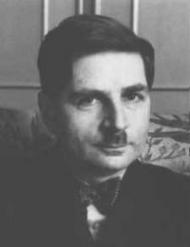Walter Hermann Schottky (23 July 1886 – 4 March 1976) was a German physicist who played a major early role in developing the theory of electron and ion emission phenomena, invented the screen-grid vacuum tube in 1915 and the pentode in 1919 while working at Siemens, co-invented the ribbon microphone and ribbon loudspeaker along with Dr. Gerwin Erlach in 1924 and later made many significant contributions in the areas of semiconductor devices, technical physics and technology.
Early life
Schottky's father was mathematician Friedrich Hermann Schottky (1851–1935). Schottky's father and mother had one daughter and two sons. His father was appointed professor of mathematics at the University of Zurich in 1882, and Schottky was born four years later. The family then moved back to Germany in 1892, where his father took up an appointment at the University of Marburg.
Schottky graduated from the Steglitz Gymnasium in Berlin in 1904. He completed his B.S. degree in physics, at the University of Berlin in 1908, and he completed his Ph.D. in physics at the University of Berlin in 1912, studying under Max Planck and Heinrich Rubens, with a thesis entitled: Zur relativtheoretischen Energetik und Dynamik.
Career
Schottky's postdoctoral period was spent at University of Jena (1912–14). He then lectured at the University of Würzburg (1919–23). He became a professor of theoretical physics at the University of Rostock (1923–27). For two considerable periods of time, Schottky worked at the Siemens Research laboratories (1914–19 and 1927–58).
Inventions
In 1924, Schottky co-invented the ribbon microphone along with Gerwin Erlach. The idea was that a very fine ribbon suspended in a magnetic field could generate electric signals. This led also to the invention of the ribbon loudspeaker by using it in the reverse order, but it was not practical until high flux permanent magnets became available in the late 1930s.

